
Introduction
softfeet - 5/3/13 at 01:12 PM
Hello
I have been ‘lurking’ here a while and continue to be fascinated by the range and standard of knowledge shown and the willingness to offer helpful
advice.
I built a Dutton about 30 years ago and by now I have just about recovered from the experience. Drum front brakes, an 1100 X-flow, leaf springs at
the rear, single circuit brakes – life was simpler then.
It has now got to the point where I’m thinking shall I do something else or just not bother? I am calling it the ‘Finished by 2020 Project’, because
that’s how long it could take. I will take my time and enjoy it, because that’s part of the fun. For example, I will take about a year to clear the
garage and buy tools. Saving up to buy the parts will take some time, too.
I’m thinking of something with 1950s special style looks and technology – I have no idea what squirts and jolts are. See some of the attached
pictures for what inspires me.
A brief specification would be:
Small overall dimensions – about an 86” wheelbase
Space frame / multi tube chassis made from mild steel 1” x 1” square tubing (either bespoke or bought, such as Escort Locost, pre-lit Westfield, Tiger
HS6, live axle Striker, etc)
All aluminium bodywork
Small, British, period engine (I was thinking of using a Reliant engine but I have just acquired a front engine / rear drive Coventry Climax FWMA
derived engine, although it hasn’t run for many, many years)
4 speed manual gearbox and rear wheel drive
Live axle with coil springs, telescopic dampers, a panhard rod and either 4 trailing arms or 2 longitudinal watts linkages
Front suspension with coil springs, telescopic dampers and – possibly – an anti-roll bar and either double wishbones or upper rocking arms with
inboard springs and dampers
Pack and pinion steering
Wire wheels with period tyres, possibly 14” x 4½” and 165R14
Disc front brakes, drums rear, no servo
Period fittings, such as lights, instruments, seats
It will need to pass IVA, so this will be taken into account in the design / build.
It should have slightly more power than grip. 100bhp is perfect in a car weighing ½ ton and I feel that, in a road car, torque is as important as
power. It will be mainly for road use on sunny weekends and maybe the occasional track day.
I don’t want it to be a replica of anything in particular. I want to try to move away from the usual ‘Seven’ styling of gaping mouth and upright rear
end.
My first job, along with clearing the garage and buying tools, is to get the engine running and start buying the smaller, cheaper parts. I’m sure I
will have many questions for you opinions and advice.
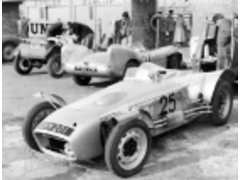

Broadley Special
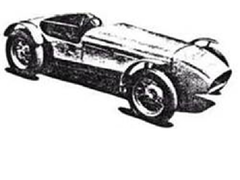

Buroche
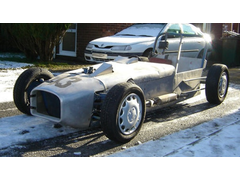

Jeffrey1
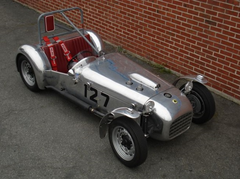

Lotus Six shiny
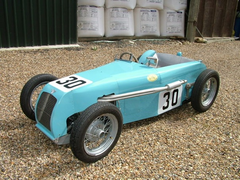

Pigsty
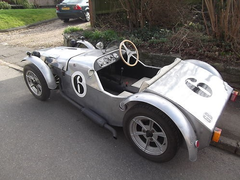

Speedex2

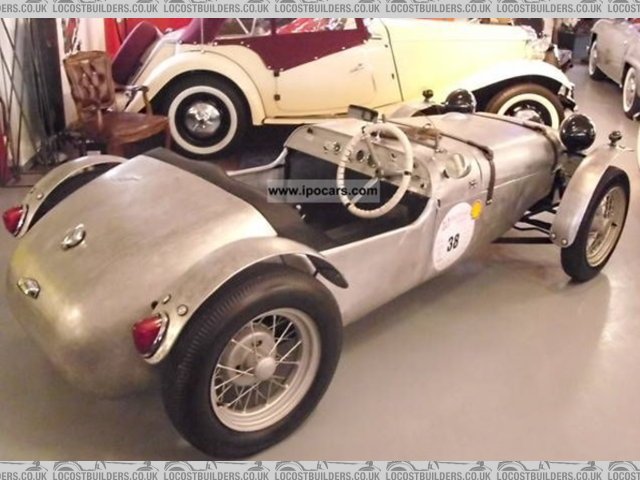
Speedex3
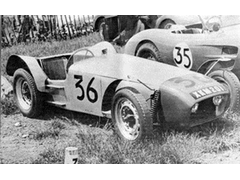

Broadley2

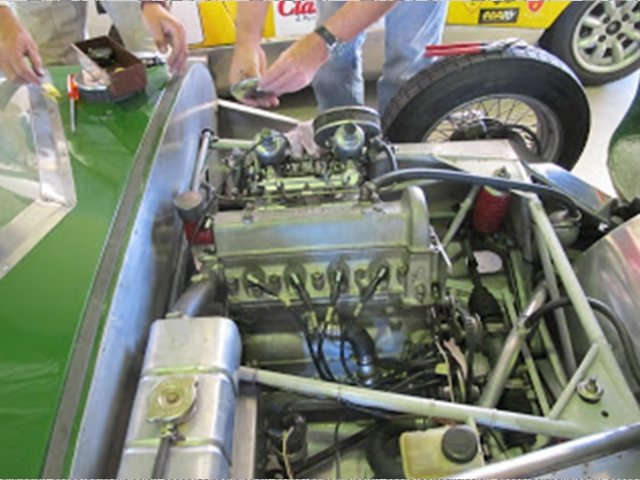
FWMA in Lotus Eleven
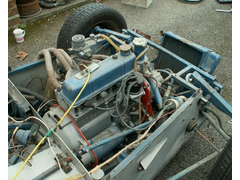

Jeffrey2
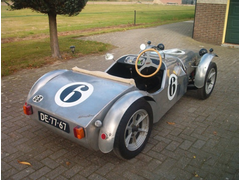

Speedex1
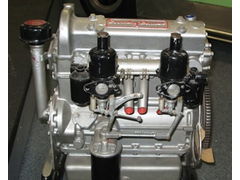

FWMA2
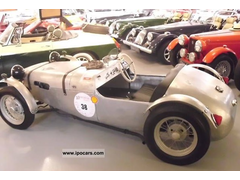

Speedex4
designer - 5/3/13 at 01:21 PM
The sly blue car (number 30) is brilliant.
RK - 5/3/13 at 01:27 PM
I only have one piece of advice. I built a very incomplete kit, and put it on the road here in Canada. It was a monumental feat for me and of course,
the car is never finished.
I only have one piece of advice:
The further off the well trodden path you go, the more headaches you'll have. And you don't have to go very far off in a 7 type to get
almost lost in it, unless you are an experienced mechanic. Sometimes even deep pockets won't save you.
mcerd1 - 5/3/13 at 01:51 PM
if you don't fancy starting from scratch you could just build some custom bodywork over the top of an existing chassis (or chassis design)
you could even pick up an older kit thats already on the road an modify from there - if you don't make any significant chassis changes
you'll only need to get teh V5 updated and an MOT when its done 
I know you say you'd prefer a live axle setup, but the de dion is a simple alternative
it behaves a bit like the live axle but with a bit less unsprung weight and without the torque reaction 
have you got a source of the wire wheels in mind ?
as this could have a big impact on the choice of axles / hubs....
softfeet - 5/3/13 at 02:28 PM
Thanks for the replies.
designer: the blue car is an Austin 7 Special made by Pigsty Racing.
RK: very good advice, that's why I'm considering basing it on a bought chassis, such as an Escort Locost, pre-lit Westfield, Tiger HS6,
live axle Striker, etc.
mcerd: see above for chassis. De Dions are very appealing - I used to drive a Rover P6 and loved the ride / handling, but it may be an upgrade for
later. I am considering an MGB back axle and Triumph / Alford and Alder font hubs. Both are 42mm, 8TPI and 75 splines. MGB wire wheels would
obviously fit straight on the back. I need to reasearch inset, etc for the front. The alternative is to use Midget front and rear, like early
Westfields, but the back axle is very narrow. I think that wire wheel adaptors can be fitted to any car (certainly Ford Sierras), but they are not an
elegant solution.
hughpinder - 5/3/13 at 03:35 PM
I've always thought the pembleton brooklands (the 4 wheeler version) looked like a bit of fun - doesn't use a 'british' engine
though - 2CV, moto guzzi or bmw bike engines - ait cooled
http://www.pembleton.co.uk/
Regards
Hugh
mcerd1 - 5/3/13 at 03:51 PM
^^ you could give yourself more/easier options and a better choice of tyres if you can find set of non-wire wheels you like....
there are sill a few classic style alloy wheels being made by the likes of compomotive: http://www.comp.co.uk/wheels/replica.asp
or the likes of Image do some 3 piece wheels in clasic styles like these (not the cheapest wheels in the world though...) -
http://www.imagewheels.co.uk/large_wheel_pages/b46_classic.html
but if you really want wire wheels just go for it 
[Edited on 5/3/2013 by mcerd1]
Not Anumber - 5/3/13 at 04:42 PM
Welcome Softfeet. It's great to see your interest in traditional design and technology.
In the 90's I built an AC Ace replica using MGB and Triumph TR6 running gear which gave it the heart and soul of an early 1960's British
sportscar but it went round corners properly due to a Cobra spaceframe chassis designed by Gerry Hawkridge.





As has been said already there are several advantages of using a 7 esque spaceframe chassis and fitting your own design of bodywork. There is a
wealth of knowledge and support to be drawn from on this forum and elsewhere that will sustain you.
Though the majority of recent chassis designs are based on independent rear suspension it should be practical to modify for live axle use with a
modicum of welding and fabricating. Dont rule out IRS altogether though as there are handling and ride advantages as well as ease of obtaining donor
parts.
softfeet - 5/3/13 at 05:36 PM
mcerd1: wire wheels are not a definite - early Lotus Sevens used steel wheels for example
Not Anumber: that is a beautiful car, so much more subtle than a Cobra
Not Anumber - 5/3/13 at 06:12 PM
One affordable way to replicate the look of the early Lotus 7 13" steel wheels but a tad widerto take a wider range of tyres could be to use
early Hyandai Accent steel wheels with small lugs mounted on the boltface to take Lotus Cortina chrome hubcaps.
Westy1994 - 5/3/13 at 07:57 PM
Welcome to the forum Softfeet,
I like the concept you are after. I quite like the Silver 'competition numbered' 6, a style I could live with. I recently found this pic
online, which is very well done, it's a Austin Ruby body on a Caterham chassis.

Personally I would have put some more 'period' wheels on than those, but a fine car none the less.
StrikerChris - 5/3/13 at 08:36 PM
Regards the engine if the coventry climax is the 930 out of a sunbeam its quite sought after in imp circles.but the cost of tuning bits since ebay,
has made them ridiculously expensive to tune at the same time. A screamer, but look into the cost of tuning parts before you commit to it.at some
point what ever you build, what ever engine youll want tweek it if your planning on driving it on the road.
Just my view having being a massive imp fan, and having had an imp since I was first driving I am very aware that on modern roads with modern cars
even a mildly fiddled with 875 imp feels scarily slow and I doubt it weighes in much more than a home grown kitcar
Chris
mark chandler - 5/3/13 at 09:00 PM
I,m liking the rear of no.38, always felt the rear of my locost looked bulky.
I hanker for something period, although further back in time using a jag engine and a LDV or DAF chassis, even have the wire wheels and gearbox ready.
iank - 5/3/13 at 09:16 PM
Like this one


Buroche
which seems to be called a Buroche, but google isn't helping find it for once.
Would certainly seem to be the easiest to build on an existing 7 chassis.
softfeet - 5/3/13 at 11:21 PM
Striker Chris: Good advice and yes, it is out of a Sunbeam. It was from a low mileage, one owner car which was being turned into Lotus Sunbeam rally
car by its new owner. Yes, tuning parts can be expensive, particularly if going for overbores or long strokes. But I already have an Imp Sport
exhaust manifold, R17 and R20 cams are £150 (but need a small modification to the cam carriers) and twin 1 1/4" SUs from Triumph Spitfires are
also about £150. An inlet manifold will be a challenge, though. I, too, had an Imp and loved the revvy engine compared to lumpen A series and
crossflows. An Imp weighs just over 700kg, a Lotus 7 (or 6!) style sportscar should weigh a bit less than this. I agree though, it will never keep
up with Toyota, Honda, Yamaha, etc engined cars.
Mark Chandler: No 38 is a Speedex, an Austin 7 Special made by Jem Marsh, who went on to found Marcos. I think my time period is later than yours.
iank: the Buroche was a Ford Popular / Austin 7 special. This picture was also on the 1950specials website which has now closed. It is also in Steve
Hole's A to Z of Kit Cars book.
907 - 6/3/13 at 05:46 AM
Hi Softfeet,
It's refreshing to see someone that's prepared to make something different. I will watch this thread with interest.
Also, good that you have a realistic time span to complete the project. Patience is often sadly lacking nowadays.
If I have a piece of advice, for what it's worth, it would be not to discount building the chassis. If your intention
is to make your bodywork then why restrain the dimensions to an existing chassis.
I started with my chosen engine and gearbox and a drawing of the book Locost chassis on a large sheet of hardboard.
It was at this early point that I realised that deviation was the name of the game, for me anyway.
In my advancing years my philosophy is; "the drawing is only a guide."
I wish you well in your months of "thinking time" and your years of happy building.
Yes there are hurdles to cross, but that's part of the fun, and ultimately the sense of achievement at the end.
Cheers.
Paul G


































